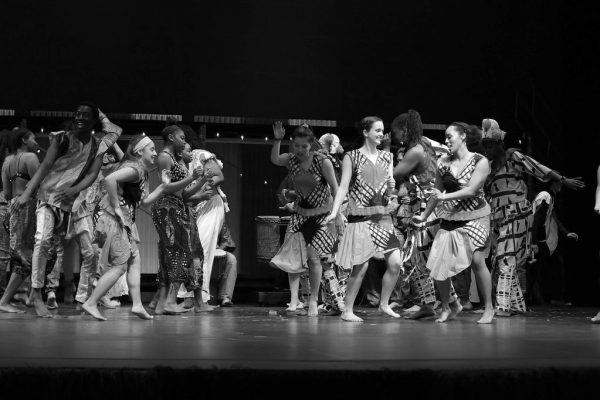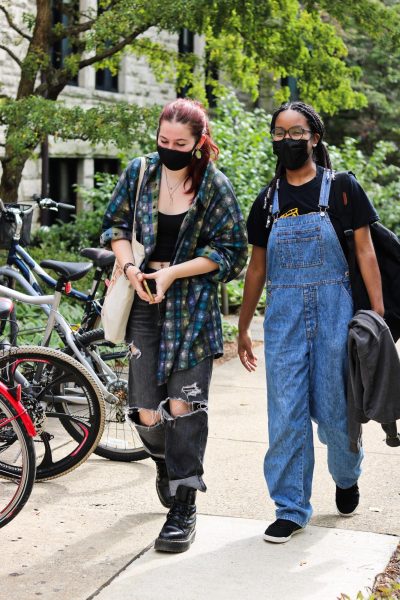Stop Underestimating the Power of Small-Scale Change
Growing up as a young girl in America, my own personal feminism has developed alongside larger movements. My first experiences with feminism were largely mediated by the strong female characters I encountered in the media I consumed. I spent large parts of my childhood reading my way through the public library’s youth fiction section. Though my parents were self-professed feminists who pointed me toward female-centered literature, female main characters remained few and far between. When I did encounter female main characters they tended to fit a certain trope — they were headstrong, physically adept, emotionally closed off, smart, tough, and stoic. They were fighters. They were rebels. They shoved their feelings down into the soles of their scuffed-up combat boots. Most importantly — they were not like other girls.
These characters — Katniss Everdeen from The Hunger Games, Hermione Granger from Harry Potter, and Kat Stratford from 10 Things I Hate About You, to name a few — acted as molds for the woman I aspired to grow into. They were independent. They were cool. They were completely and utterly badass. They were successful, they were smart, they were respected by their male peers. While these were important qualities for a young girl to see represented in the media, they often came at the expense of putting other women down. Throughout their narratives, Katniss, Hermione, and even Kat continually distance themselves from the other female characters within their narratives, expressing distaste for their adherence to values traditionally associated with femininity — interest in fashion and homemaking and boys. In separating themselves from traditionally feminine structures, they implied that to be accepted as a strong and capable woman you must, to a certain extent, reject objects, fashions, and ideas that have long been associated with femininity.
College has given me the distance to evaluate the ways in which such narratives shaped my childhood understanding of femininity. I am not alone in my childhood rejection of the color pink, my detestation of dresses, or my refusal to associate myself with anything frilly or feminine. These interests — or lack thereof — are not inherently flawed, but as I’ve grown up, I’ve learned to be intentional about why I participate in or choose to separate myself from certain gendered structures. Why did I hate pink and refuse to wear dresses? Was my self-imposed distance from these traditionally feminine structures because I didn’t like these things, or was it because I was afraid of being equated with a certain “type” of woman I had been taught to despise? In the same vein, I have been able to evaluate the structures of femininity that I now operate within. I wear makeup and I shave my legs. I am often soft-spoken or worried to speak up about my own opinions or needs. I ask myself similar questions about why I take part in these structures. Do I make these choices because I want to or because I am afraid of being judged? I do not claim to have all the answers. It is a process I am only just beginning and will continue to undertake for the rest of my life.
When we talk about activism, we tend to think of large-scale events — protests and strikes, nationwide or statewide movements that bring huge groups of people together in the name of social and political reform. Involvement in these movements, whether remotely or on campus, is a shared passion among the Oberlin community. We boast groups like Students for Energy Justice, Survivors of Sexual Harm & Allies, and Students for a Free Palestine — each dedicated to advocating for or against a specific cause. And though these large-scale movements are important and work to unify individuals to engage in productive dialogue and enact specific legislative goals, it is important to make space in our definition of activism for more personal growth. Collective action is only made possible by the small steps we each take toward acting on our convictions in our everyday lives.
These small journeys of self-discovery within a larger sociopolitical context are integral to the on-campus activism within Oberlin culture. There is a narrative that I have heard, specifically as a first-year on this campus, that Oberlin’s activism culture has declined within recent years. While it may be true that large-scale protests and sit-ins are less common than they were in years past, Oberlin excels in a smaller, everyday activist spirit. I have been impressed by the attention our professors give to the importance of mental health in the classroom, the respect students have for remembering to ask for each other’s pronouns at first meetings, and discussions among friends about issues of race, class, gender, and sexuality that happen on an everyday basis and allow us, as students and as people, to learn and grow. There is an understanding that Oberlin College can sometimes be a bubble, closed off from the rest of the world. This Oberlin echo chamber can, at times, be harmful due to its tendency to cut students off from differing ideas and ideologies. But in other ways, the Oberlin bubble facilitates a community of students participating in these small acts that prioritize how we interact with one another and our own shifting identities on a daily basis.




